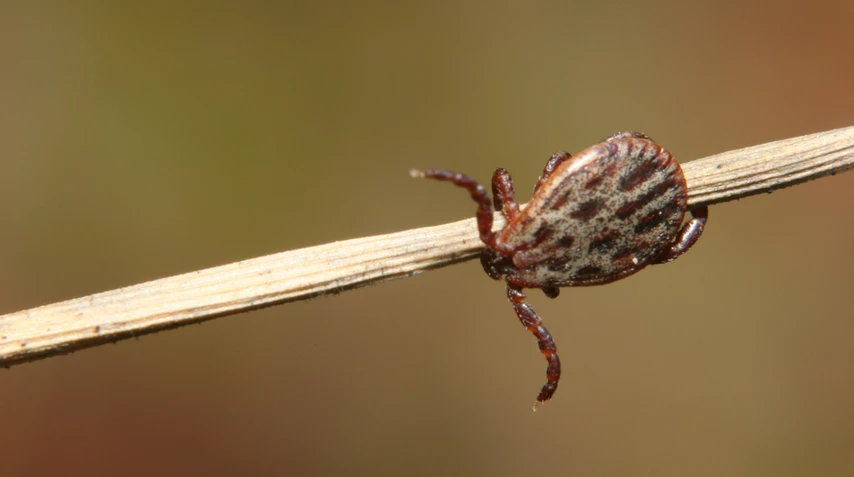When Paralysis Ticks Attack: Paralysis Tick Symptoms in Dogs


Pets are a source of unconditional love and companionship for many, and the thought of anything harming them can be overwhelming and heart-breaking.
Paralysis ticks (Ixodes Holocyclus) can wreak havoc on your furry friend's health, causing a range of symptoms from mild irritation to life-threatening paralysis. Although paralysis ticks can bite humans, this is far less common and results in significantly less fatal symptoms.
As a responsible pet owner, it is essential to know how to identify the signs of tick paralysis and take preventative measures to keep your dog safe from these parasites.
And if you aren’t a dog owner, this information is still important as ticks can also harm other furry pets, such as cats.
Continue reading to learn more about identifying ticks, recognising symptoms of tick paralysis, and preventative measures to minimise the risk of tick bites.
Paralysis ticks have an oval-shaped, flattened body that is typically a greenish-grey colour.
However, it can be difficult to identify a paralysis tick by the body colour as this will change after it has fed on your pet. In addition to this, the tick will be larger in size the longer it has been feeding on your pet.
Paralysis ticks can be identified by the colouring of their eight legs, with the first and last pair having a dark brown colouring, whilst the pairs in the middle are beige. For more information on identifying a paralysis tick, check out the Australia Wide First Aid tick identification chart.
Paralysis ticks are commonly found in humid coastal regions of eastern Australia, particularly in central and southern areas of Queensland as well as coastal New South Wales.
They tend to thrive in humid and coastal environments, such as rainforests, scrubland, and even suburban backyards.
Tick season runs all year round, although they can be found in higher numbers in northern areas during winter and southern areas during summer.

Paralysis ticks attach themselves to dogs and furry pets by crawling across their fur and finding a suitable spot to bite into their skin.
They prefer areas of the body with thinner skin, such as the ears, neck, and face, where they can more easily access the blood vessels. Once attached, they begin feeding on their host's blood. Only the female paralysis tick can cause paralysis in a dog.
The female’s saliva, which contains a neurotoxin called holocyclotoxin, finds its way into the bloodstream after biting which can cause paralysis.
The signs and symptoms of paralysis tick poisoning in dogs can vary depending on the severity of the infestation. It can take up to five days for your pet to display symptoms of paralysis, however, once they appear your pet’s health can go downhill quickly.
If your dog or cat has been bitten by a paralysis tick, they may exhibit symptoms such as:
If these symptoms progress without treatment, it can result in your pet suffering more life-threatening symptoms such as respiratory failure, aspiration pneumonia, and even heart failure.
If your dog is displaying any of these symptoms, be sure to seek a vet immediately.
If you find a tick or ticks on your dog, the first thing you should do is remove the tick immediately.
Using tweezers or a tick-removal tool, grasp the tick as close to the skin as possible to avoid leaving any mouthparts behind.
Once the tick has been removed, monitor your dog closely for any signs of paralysis whilst continuing to keep them calm and in a comfortable environment.
Do not give your pet any food or water at this time as it may damage their airways if they are experiencing the effects of paralysis tick poisoning.
If your dog begins exhibiting any of the symptoms listed above, seek veterinary attention immediately so they can administer supportive care. In severe cases, dogs may require intensive care and mechanical ventilation to help them recover from tick paralysis.
Preventing paralysis ticks in dogs is key to keeping them safe and healthy. Here are a few tips to help protect your furry friend:
By taking these preventative measures, you can help keep your dog safe from paralysis ticks and other tick-borne diseases.
Paralysis ticks are a serious threat to dogs in certain regions of Australia. By being aware of the signs and symptoms of tick paralysis, taking preventative measures, and seeking veterinary attention immediately, you can help protect your furry friend from these dangerous parasites.
Remember, prevention is key when it comes to keeping your dog healthy and happy. Knowing how to recognise the signs and symptoms of tick paralysis and other emergencies is crucial for any pet owner.
If you are interested in learning first aid for paralysis ticks as well as other health conditions, consider signing up for our First Aid or Childcare First Aid course.

April 16, 2024
Like humans, our canine friends are susceptible to allergies, which can significantly affect their quality of life. This article aims to shed light on common allergies in dogs, their signs and symptoms, treatment options, and advice on when to consult a veterinarian.

March 19, 2024
From respiratory distress to changes in droppings and abnormal behaviours, this guide outlines the key indicators of illness that require immediate attention. By understanding these warning signs, bird owners can take proactive steps to ensure their feathered companions receive timely medical treatment, ultimately promoting their health and well-being.

February 12, 2024
In the hustle and bustle of our daily lives, it's easy to overlook that our furry friends may not be leading lives as fulfilled as we'd like. Just like humans, dogs too can suffer from monotony, especially those spending large amounts of time indoors. Recognizing and addressing boredom in our canine companions is crucial for their overall well-being.